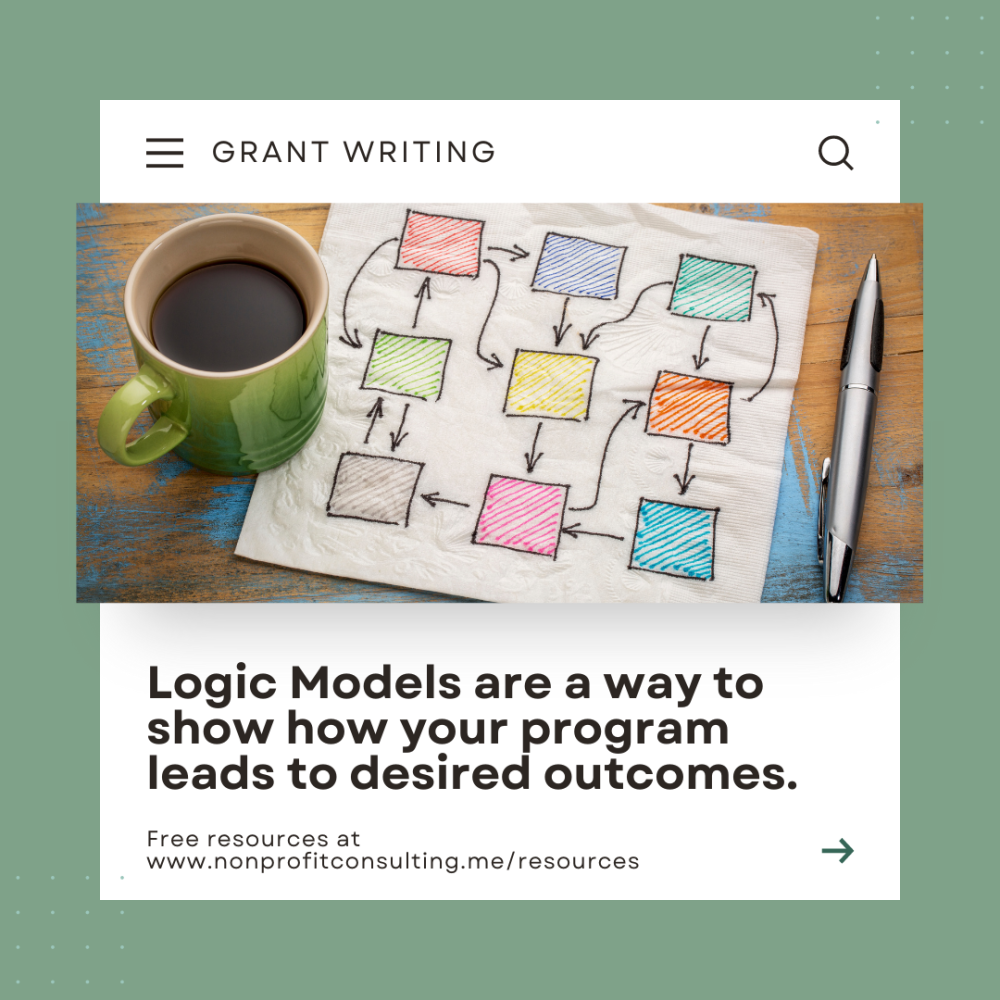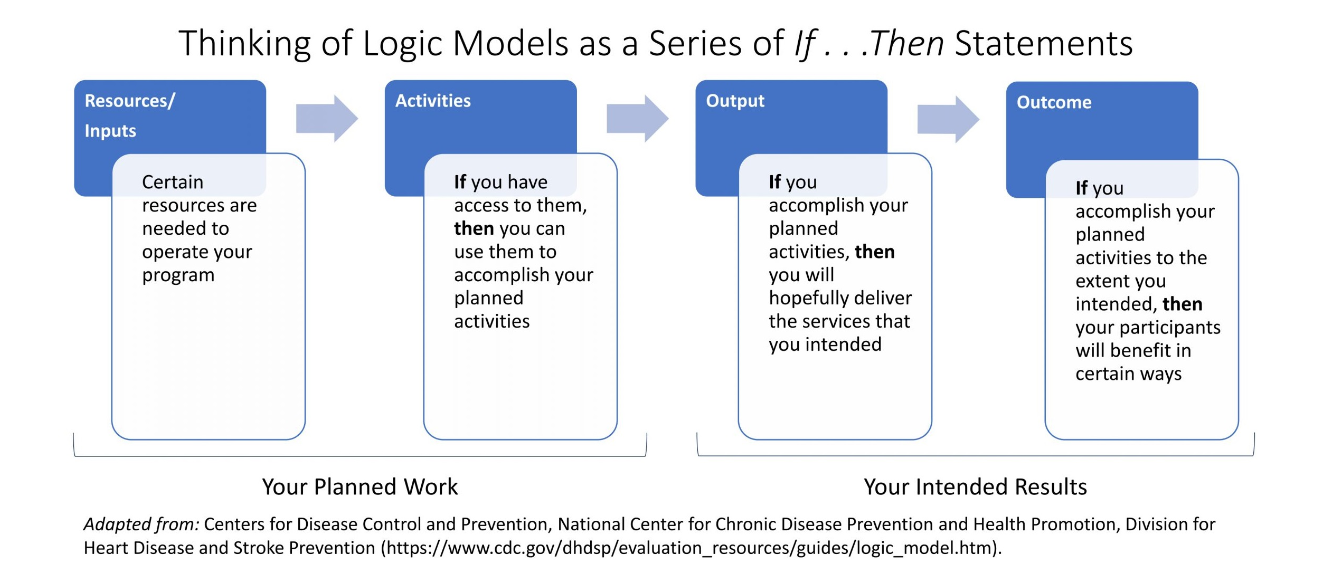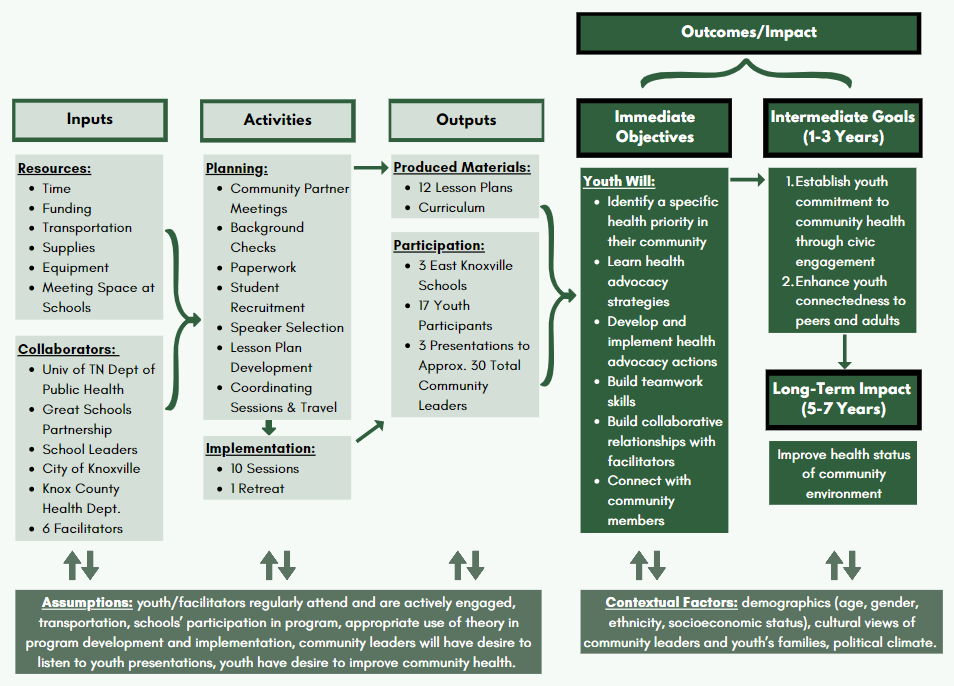Making Sense of Logic Models
So your funder requires a logic model? Don't be intimidated - logic models are useful tools! In this post, we'll discuss what logic models are and how to use them effectively.
WHAT IS A LOGIC MODEL?
Quite simply, a logic model is a visual tool that describes your program and its intended impact.
Free Logic Model Development Guide:
Funders want to see the explicit connection between your program and its intended impact. Logic models force you to succinctly describe the pathway to change in a way that makes sense to the funder. The logic model should reflect the content in your grant proposal. For instance, your program implementation section should detail the activities and outputs you've listed in the logic model.
Let's break down the components of a logic model:
Inputs or Resources: this is where you describe the physical, human, financial, and other resources needed to implement your program.
Activities: this is where you'll detail the major components of your program. This is how you'll use the resources described to result in your desired outcomes.
Outputs: these are the finished products that result from your program, such as what services you'll provide, how many people you will serve, and what resources will be created through your work.
Outcomes: this is what your program hopes to achieve. Typically, short-term outcomes are achieved in weeks to months and include changes to knowledge, attitudes, beliefs, and skills. Intermediate outcomes take months to years to achieve and often include changes to behavior, decision-making processes, policies, and practices. Long-term outcomes (or impacts) take years to achieve and often describe wider social, civic, or environmental changes.
Source: https://www.cdc.gov/tb/programs/evaluation/Logic_Model.html
LOGIC MODELS AND EVIDENCE-BASED PRACTICE
Funders want to see the use of evidence-based practices (EBP) to achieve your desired outcomes, and you can describe those practices in your grant proposal. While the logic model shows the resources and actions needed to achieve your outcomes, it does not necessarily show how the program design is driven by EBPs or incorporates EBPs.
The theoretical foundations of your program may be evidence-based, incorporating, say, a behavior change theory. Such a foundation would be informed by your target audience and desired outcomes, and it would shape the resources, activities and outputs utilized by your program. Your proposal should describe the model or theory that you're using to design the program and cite the evidence supporting the use of this design.
When using an evidence-based model or theory to design your program, you may wish to add a box underneath your inputs and outputs to describe the assumptions you're making as to why and how this theory or model will lead to the desired outcomes.
Perhaps you're incorporating a specific evidence-based intervention. In this case, you may still include an "assumptions" box to list the specific elements of the intervention needed for effective implementation. Implementation fidelity may require training of program facilitators, commitment from community partners and participants, access to certain resources, or other factors that you may wish to explicitly list.
Source: https://www.publichealthontario.ca/-/media/documents/f/2016/focus-on-logic-model.pdf?la=en
PROCESS AND OUTCOME EVALUATIONS
Your logic model can also help you describe your program evaluation plan. A process evaluation examines implementation fidelity and whether the program was delivered as planned. A process evaluation may look at who was served, what was accomplished, adherence to the original design of the intervention, efficiency, cost-effectiveness, and other implementation components.
From the logic model, the inputs, activities, outputs, and assumptions provide the basis for a process evaluation that examines whether the program was effectively implemented according to its design or plan. The grant proposal will describe both the overall design and the specific steps and measures of the process evaluation.
An outcome evaluation, on the other hand, examines whether your program has achieved its intended outcomes. It looks at the immediate impact that can be directly attributed to the program, typically those items listed in your short-term or intermediate outcomes.
Source: http://nonprofitconsulting.me/resources
Because you must explicitly state your intended outcomes in the logic model, you have likely listed the items you'll be measuring in an outcome evaluation. Your grant proposal will describe the evaluation design and the specific evaluation activities, measurements and analyses you'll undertake.
Source: https://learningforsustainability.net/logic-models/
PUTTING IT ALL TOGETHER
Let's take a look at a logic model I did as part of a group project in graduate school. We separated the sub-sections into different text boxes to help visually break up the logic model a bit.
We included assumptions and contextual factors in our logic model because recognizing both were important to the proper implementation of the program and to attaining our desired outcomes.
View the Public Health Curriculum on www.nonprofitconsulting.me/portfolio to learn more about this program. The full curriculum includes the theoretical underpinnings of the program and all of the implementation steps, including lesson plans.
Source: www.nonprofitconsulting.me/portfolio
GET HELP
Contact me at jessica@nonprofitconsulting.me
or 865-809-8453.
Do you feel ready to tackle your next logic model? If you've still got questions, please feel free to contact me.
I offer a free 30-minute consultation during which we can discuss your logic model. www.nonprofitconsulting.me/schedule.









